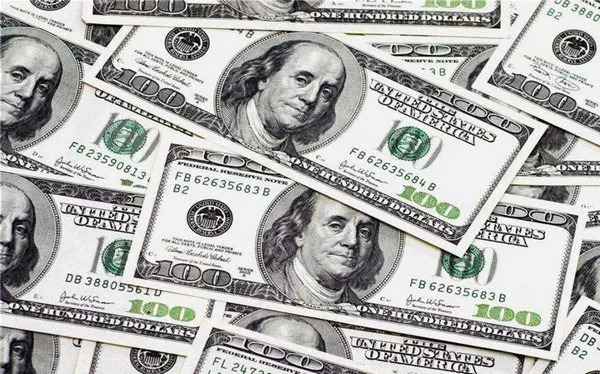Dollar coins, while a common denomination in the United States, can sometimes leave individuals wondering about their rarity. In this article, we will explore the question, “How rare is a dollar coin?” by delving into the history of dollar coins, examining their current circulation, and discussing valuable dollar coins that collectors often seek. Whether you’re a casual observer or a seasoned numismatist, understanding the rarity of dollar coins can add depth to your appreciation of these intriguing pieces of currency.
The History of Dollar Coins
To understand how rare dollar coins are today, it’s crucial to explore their historical context. Dollar coins have been part of American currency since the late 18th century. The very first dollar coins, often referred to as “Flowing Hair” dollars, were minted in 1794 and 1795.
These early coins were quite large and made of precious metals like silver. Their rarity today is unquestionable, as only a limited number have survived the passage of time.
Over the years, various designs and compositions have been used for dollar coins, including the famous Morgan and Peace silver dollars, as well as Eisenhower dollars and Susan B. Anthony dollars. While many of these coins are no longer in circulation, they have varying degrees of rarity in the collector’s market. Therefore, the answer to “How rare is a dollar coin?” can vary depending on the specific type and age of the coin in question.
Current Circulation of Dollar Coins
In everyday transactions, you may have noticed that dollar coins are not as common as their smaller counterparts, such as quarters, dimes, and nickels. One reason for their relative scarcity in circulation is the preference for paper one-dollar bills. Many people find it more convenient to carry and use paper currency for small denominations.
Consequently, dollar coins, while still produced by the U.S. Mint, are primarily minted for collector purposes rather than general circulation.
However, there are a few exceptions to this rule. The most notable is the Presidential Dollar coin series, which was minted from 2007 to 2016. These coins featured the images of former U.S. Presidents and were intended for use in everyday transactions. Nevertheless, they never gained widespread popularity in circulation, and the series was eventually discontinued.
So, how rare is a dollar coin in everyday transactions? The answer is that they are relatively rare compared to other forms of currency like one-dollar bills. If you come across a dollar coin in your change, it may not be an everyday occurrence, but it’s not an extraordinary event either.
Valuable Dollar Coins for Collectors
While many dollar coins in circulation are relatively common, some can be quite valuable to collectors due to their rarity, historical significance, or unique characteristics. Here are a few examples:
Morgan Silver Dollars: These iconic silver dollars, minted from 1878 to 1921, are highly sought after by collectors. Some Morgan dollars, particularly those from specific mint years or with particular mintmarks, can command significant premiums.
Peace Silver Dollars: Minted from 1921 to 1935, Peace dollars hold historical significance as they were created to commemorate the end of World War I. Rare varieties and coins in excellent condition can be quite valuable.
Susan B. Anthony Dollars: Although not as old as Morgan or Peace dollars, Susan B. Anthony dollars can still be collectible. Certain dates, like the 1979-P “Near Date” variety, are particularly sought after by collectors.
Error Coins: Dollar coins with minting errors, such as double strikes or off-center strikes, can be extremely rare and valuable. These errors are highly sought after by collectors looking for unique pieces.
Proof Sets: Proof dollar coins, which are specially minted with a mirror-like finish, are often included in annual U.S. Mint Proof Sets. These sets can appreciate in value, especially if they contain proof versions of rare or low-mintage coins.
So, how rare is a dollar coin in the world of numismatics? It depends on the specific coin and its characteristics. Collectors often pay premiums for coins that are scarce, in excellent condition, or have unique attributes that make them stand out.
Tips for Identifying Rare Dollar Coins
If you’re interested in collecting dollar coins and want to identify rare specimens, here are some tips to help you on your quest:
Research: Familiarize yourself with the various dollar coin designs, minting years, and mintmarks. Resources like books, websites, and coin catalogs can provide valuable information.
Condition: The condition of a coin significantly impacts its value. Coins in mint condition (often referred to as “Uncirculated”) are generally more valuable than those with wear and tear.
Mintage Figures: Research the mintage figures for the specific coin you’re interested in. Lower mintage numbers typically indicate greater rarity.
Seek Expert Advice: If you’re unsure about the authenticity or value of a coin, consult with a reputable coin dealer or numismatist who can provide expert guidance.
Join a Collector Community: Joining a local or online coin collector community can be a great way to learn from experienced collectors and stay updated on the latest developments in the hobby.
In conclusion, the rarity of a dollar coin can vary widely depending on factors such as its age, design, condition, and historical significance.
While dollar coins may not be as common in everyday transactions as other denominations, they are still actively collected by numismatists around the world. Whether you’re a casual observer or a dedicated collector, understanding the factors that contribute to a dollar coin’s rarity can enhance your appreciation of these fascinating pieces of American history.
Related Topics:
Who is on the 10 Dollar Bill: A Comprehensive Overview
Unlocking the Mystique: Are Sacagawea Dollars Real Gold?
Who is on the 2 Dollar Bill: A Comprehensive Overview

























